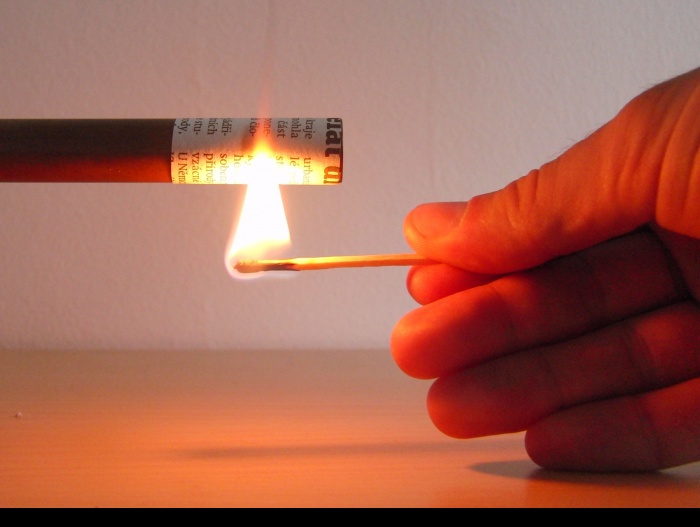Paper That Does Not Burn
Experiment number : 2254
Goal of Experiment
The goal of this experiment is to demonstrate excellent thermal conductivity of copper.
Theory
The most common heat exchange mechanism in solids is thermal conduction (for more information see Thermal Conductivity of Plastic and Metal I., Theory ). The best thermal conductors include materials such as silver, copper and aluminium; a higher thermal conductivity can be measured in an uncommon graphene.
In this experiment we will use a newsprint paper wraped around a copper tube at one end. The paper has an ignition temperature of 185 °C. Then we place the paper into a candle flame (a temperature of about 700 °C). The paper does not ignite – the copper tube conducts heat further into its volume fast enough to prevent the paper from exceeding its ignition temperature.
Equipment
Copper tube (copper heating tube with a diameter of 15 mm and length of 25 cm was used in the sample experiment), holder for fixing the tube horizontally, newsprint paper, candle, matches.
Procedure
Wrap a strip of a newsprint around one end of the copper tube; the paper must be wrapped around the tube as tightly as possible and in only one layer. You can fasten the paper with a small piece of tape.
Fix the copper pipe to the stand in a horizontal position a put a lit candle under it. Similarly, we can also use a match – see Figure 1.
Leave the paper 10-15 seconds in the flame; then the put the candle out and end the experiment.
Sample Result
Despite intense heating, the paper does not ignite.
Technical Notes
If you let the tube heat for too long, its temperature will rise to a point where it will no longer be able to dissipate enough heat from the place it is being heated to other parts and the paper will catch fire.
Safety precautions: Never hold the copper tube with unprotected hands! Even the far end of the tube warms up during the experiment. Follow safe working practices when working with fire.
Pedagogical Notes
If we show the students that the paper wrapped around the tube does not catch fire, a natural question is offered – how to wrap the paper so that it does catch fire? If students understand the principle of heat conduction, sooner or later they come with two possible ways: either the paper can be wrapped loosely around the tube without close contact with it, or it can be wrapped in more layers. Both ways have a common idea, namely to weaken the thermal contact of the paper with copper.
To increase the effect of the experiment, the flame temperature of the candle can be measured (e.g. with a thermocouple) “live” before starting the experiment to make it clear that it is much higher than the ignition temperature of paper.








